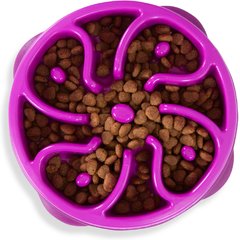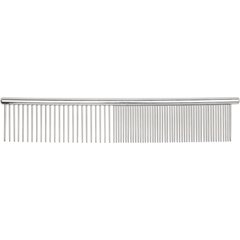Spinone Italiano
Adobe Stock/Wirestock
The Spinone Italiano is a scruffy, sweet hunting dog who is tireless in the field but happy to live at a leisurely pace when off-duty.
Originating in the Piedmont region of Italy, the breed’s name comes from a former moniker—Bracco Spinoso—which means “prickly pointer” in Italian. According to the Spinone Club of America (SCOA), this label refers to either the dog’s wiry fur or the thorny bushes in which they would track their game.
In studying both the Spinone Italiano’s appearance and history, both explanations seem plausible. After all, these are endearingly shaggy dogs, complete with human-like eyebrows, mustaches, and beards.
At the same time, hunting is central to their historical identity. Spinoni were bred to use their noses and endurance to point, track, and retrieve game on both land and water in rugged, mountainous, marshy, and often thorny terrain.
But Spinoni don’t just excel at hunting. They’re also famously friendly (and sometimes opinionated) family companions.
Caring for a Spinone Italiano
The Spinone Italiano breed standard describes the dog as “sociable, docile, affectionate and patient,” and the SCOA notes that they “are generally easygoing and usually live harmoniously with children, dogs, and other animals.”
As with every dog, though all interactions between very young children should be supervised for the safety of both the child and the pup.
Unlike other sporting breeds, Spinoni have only moderate mental and physical exercise needs. Daily play is still vital for the health of their brain and body, but keeping your pup busy shouldn’t be a part-time job.
According to the SCOA, Spinoni want your undivided attention. Despite being bred to work outside, these are house dogs who want to be near their families as much as possible.
Amid this closeness, you’ll soon notice that the Spinone Italiano has opinions. This independence makes sense for a dog who often has to think for themself in the midst of hunting work but is understandably less popular in a family setting.
And finally, humor and patience (and a beard rag) are also helpful when it comes to the Spinone’s grooming needs. Not all Spinoni can keep their beards out of the water when hydrating, and that wet beard can attract all sorts of unsavory debris, like food and dirt that hardens into what the SCOA calls “beard cement.”
The club recommends keeping a beard rag near the water bowl and teaching your Spinone Italiano to expect towel time after each drink.
Spinone Italiano Health Issues
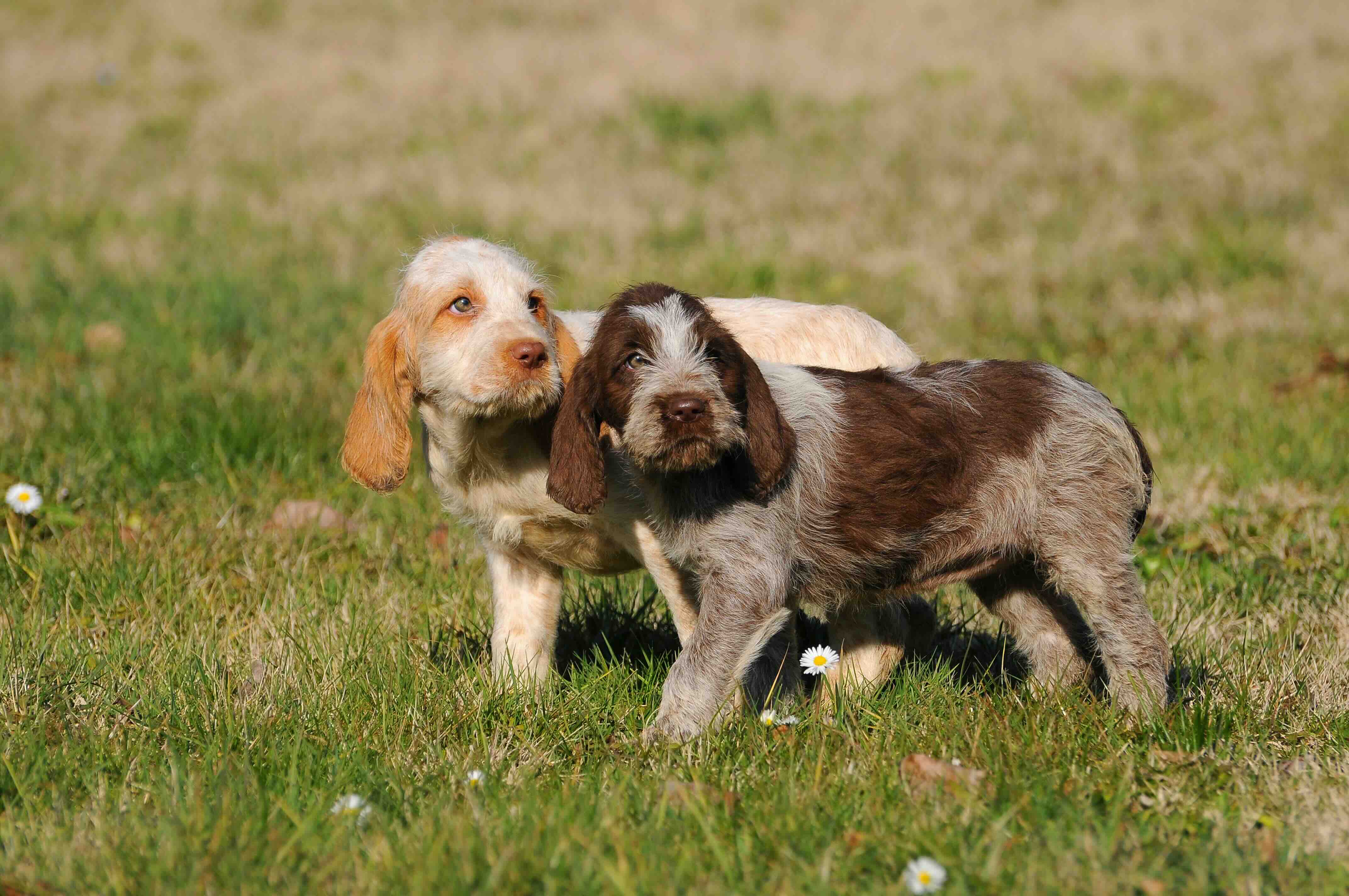
Spinoni Italiani are generally healthy dogs with a lifespan of 10–12 years. However, like all dog breeds, they’re prone to certain health conditions. This highlights the importance of selecting a responsible Spinone Italiano breeder who prioritizes health.
Hip Dysplasia
Hip dysplasia is a condition in which the hip joint doesn’t develop properly, causing joint instability that can lead to arthritis in your dog if left untreated.
Mild cases are treated with interventions like weight loss, physical therapy, joint supplements, and anti-inflammatory drugs, but severe cases may require corrective surgery.
Common signs of hip dysplasia include:
-
Limping
-
Reluctance to navigate stairs, get up, or jump
-
Shifting of weight to front legs
-
Loss of muscle mass in back legs
Elbow Dysplasia
Elbow dysplasia is when an elbow joint hasn’t developed correctly, and it’s one of the most common causes of arthritis in dogs’ elbows. Anti-inflammatory medication can help with pain and inflammation, but your vet may ultimately recommend surgery to treat this condition.
Common signs of elbow dysplasia include:
-
Limping, especially after exercise
-
Reluctance or unwillingness to walk or exercise
-
Stiffness in the elbow joint
-
Grating or crackling sound when elbow joint is moved
Eye Problems
Spinoni Italiani are predisposed to certain eye problems, including:
-
Ectropion: an abnormality in which the eyelid (typically the lower one) rolls outward, making the eyelid look droopy. This can lead to painful inflammation and may be treated with corrective surgery.
-
Cataracts: a condition where the eye’s lens becomes cloudy and hinders vision. This can be corrected with surgery.
Hypothyroidism
Hypothyroidism is a disease in which the thyroid gland produces insufficient amounts of thyroid hormones. This can lead to multiple symptoms, including:
-
Dry, brittle hair
-
Chronic ear and skin infections
The good news is that this condition can be managed with lifelong medication, and dogs with hypothyroidism often live long and happy lives.
Bloat and Gastric Dilatation-Volvulus (GDV)
Bloat in dogs is when gas and/or food cause the stomach to expand. Sometimes, bloat progresses into a condition called gastric dilatation-volvulus (GDV). This is when the dog’s stomach twists and cuts off blood flow to and from the stomach and the spleen.
GDV is painful and a life-threatening emergency, and it’s more common in large and deep-chested breeds. It’s important for Spinone Italiano pet parents to know the signs of bloat, including:
-
Retching or dry heaving without vomiting
-
Swollen abdomen
-
Sudden anxiety, pacing, or inability to get comfortable
-
Panting
If you notice any of these symptoms in your Spinone, seek emergency veterinary care immediately.
What To Feed a Spinone Italiano
Work with your veterinarian to choose the best dog food and feeding plan for your pet. A vet can recommend a food that meets Association of American Feed Control Officials (AAFCO) standards and is nutritionally complete for your pet’s life stage (puppy, adult, or senior), size, lifestyle, and health.
How To Feed a Spinone Italiano
Because Spinone Italiano dogs are susceptible to bloat and GDV, take precautions when feeding your dog to minimize the risk:
-
Feed your dog twice daily (morning and evening) instead of once.
-
Don’t allow your dog to exercise for an hour before or after eating.
-
Feed your Spinone using a slow-feeder bowl, snuffle mat, or puzzle toy to slow them down.
-
Avoid elevated food bowls.
Talk to your vet if you have any concerns about how to feed your dog.
Recommended Products
How Much Should You Feed a Spinone Italiano?
Your AAFCO-compliant dog food packaging will include guidance for how much to feed your dog based on their size. This is a great starting point, but the best advice comes from your vet. A veterinarian will take into account your dog’s age, weight, body condition score, lifestyle, and health needs.
Be mindful of how many dog treats you share with your Spinone. Treats should never make up more than 10% of a dog's daily calories.
Nutritional Tips for Spinoni Italiani
If your Spinone Italiano is eating a complete and balanced dog food that’s AAFCO-compliant, they’ll receive all needed nutrients. But your vet may recommend dog supplements to address specific health conditions. For example, joint supplements or fish oil may help dogs with hip or elbow dysplasia.
Always talk to your veterinarian before adding anything new, including supplements, to your dog’s diet.
Behavior and Training Tips for Spinoni Italiani
Spinone Italiano Personality and Temperament

Spinoni Italiani are muscular sporting dogs bred to point, track, and retrieve game on land and water. When working, the breed is seemingly tireless, built for endurance rather than speed.
But when they’re not on the job, Spinoni know how to take it easy. With only moderate amounts of energy, these are dogs who need around an hour of regular exercise daily to be healthy, but they won’t constantly be hounding you for playtime.
They might, however, demand your attention. While their dense fur and thick skin are ideal for the outdoors, a Spinone Italiano’s personality demands close companionship with their families. In other words, these are decidedly indoor dogs.
With their gentle, sociable, and affectionate demeanor, Spinoni tend to get along with most people and pets—particularly if they grow up alongside them.
Spinone Italiano Behavior
The Spinone Italiano isn’t a yes man. The breed is known for having opinions, and according to the SCOA, they may express them with grumbling, staring, or a paw of disapproval.
As previously noted, Spinoni need moderate amounts of exercise and large amounts of attention. Bored, lonely Spinoni with energy to spare will be more likely to display unwanted behaviors like excessive barking.
Hunting dogs at heart, Spinoni need to be kept on a leash or within a fenced area when outside to keep them from following their noses into danger.
Spinone Italiano Training
It’s important to safely expose Spinone Italiano puppies to different animals, people, environments, and objects during their first 16 weeks of life. This socialization helps dogs be well-behaved, comfortable, and confident in different settings as they age.
Talk to your Spinone Italiano breeder about how they approach socialization, and ask your veterinarian about socialization activities that are safe for your pet’s age.
Spinoni are smart dogs who are able to learn new skills quickly, but their independent nature means they may not always choose to follow your directions.
Like all dogs, the Spinone responds best to positive, rewards-based training. Positive reinforcement training builds the human-animal bond, while also providing dogs with crucially important mental stimulation and physical exercise.
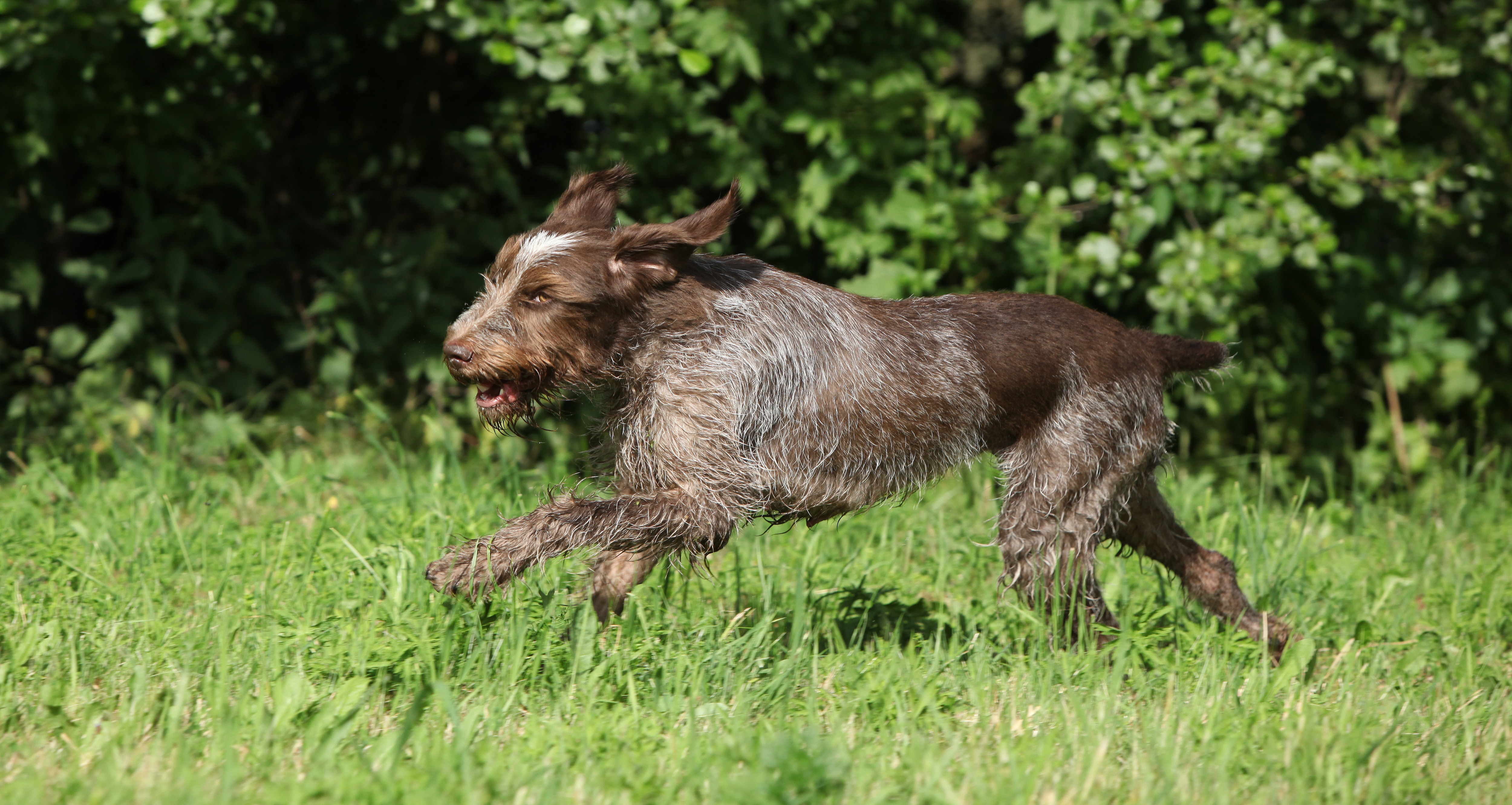
Fun Activities for Spinoni Italiani
Spinone Italiano Grooming Guide
The Spinone Italiano’s coat is described as having a “natural” look, but that label can be misleading—because looking natural requires some regular effort.
The breed standard describes the ideal coat as being “coarse, dense, and rather flat” and between 1.5–2.5 inches long. Spinone Italiano dogs don’t have an undercoat, but that doesn’t keep Spinoni from shedding moderately.
Skin Care
Spinoni are known for their thick, prickly plant–resistant skin. However, there’s no need to test their limits. If your Spinone spends a lot of time outdoors, check for ticks, twigs, burrs, and other nuisances that can get caught in their fur and cause skin irritation.
Contact your vet if you notice anything concerning or changing in your dog’s skin, like redness or flakiness.
Coat Care
When properly cared for, the Spinoni coat is resistant to both weather and dirt. But that doesn’t mean their fur is hands-off.
You’ll need to bathe, comb, and hand-strip (a method of removing dead hair at the root to maintain the dog’s wiry texture) your Spinone occasionally. Without this care, your dog’s coat can develop matting.
You’ll also need to pay special attention to your Spinone Italiano’s beard, which can soak up water and bits of food from your dog’s food dishes.
Recommended Products
Eye Care
Spinoni Italiani are prone to several eye conditions, so contact your veterinarian as soon as possible if you notice signs like redness, discharge, or cloudiness.
The breed’s bushy eyebrows can also cause eye irritation if they become too shaggy, so an occasional trim may be necessary.
Ear Care
The Spinone’s floppy ears, love of swimming, and risk for underlying allergies make them susceptible to infection. Talk to your vet about an appropriate cleaning regimen and recommendations for ear cleaners. Watch for signs of irritation, such as redness and foul odor. Talk with your veterinarian if these symptoms develop.
Recommended Products
Considerations for Pet Parents
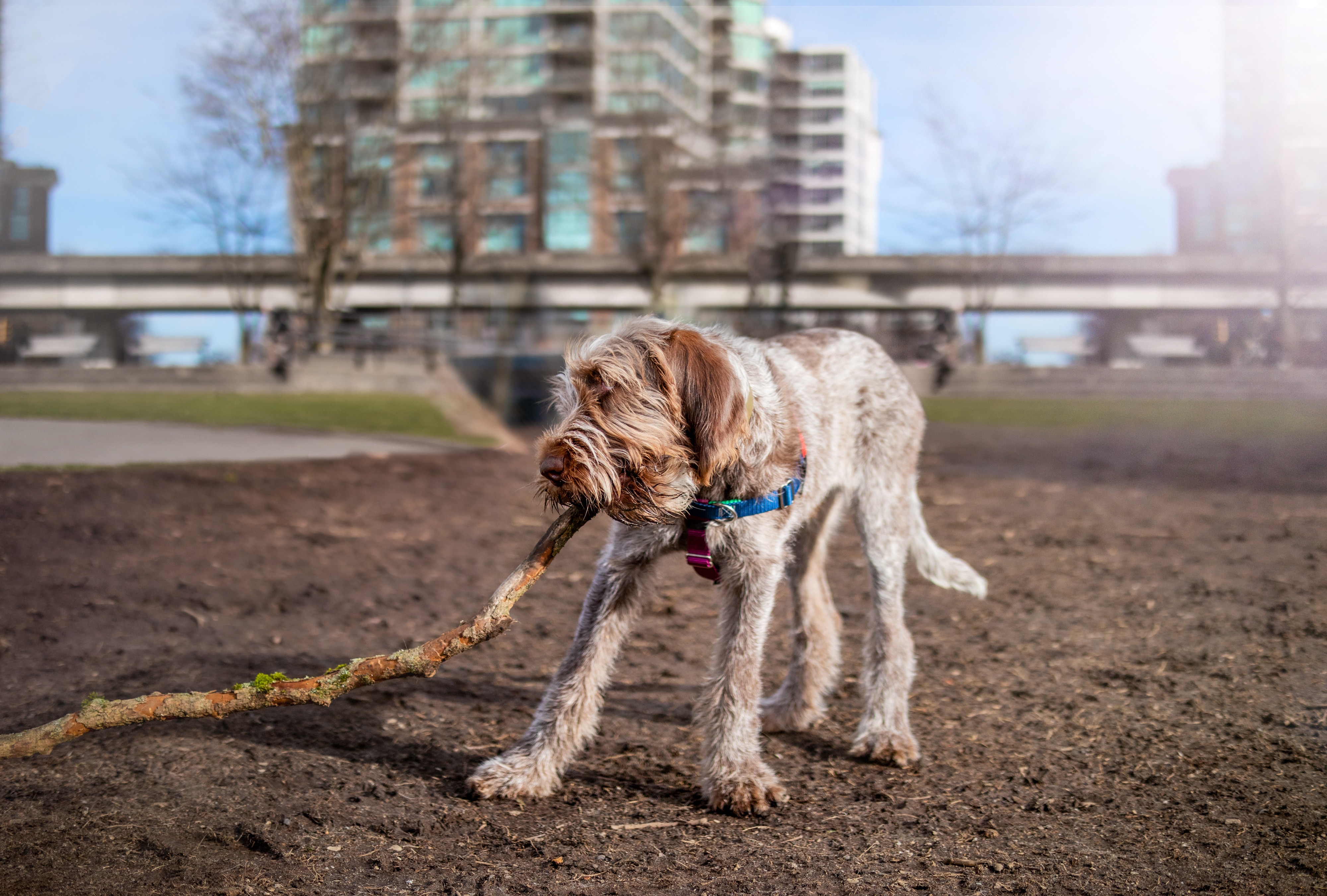
Here are some questions to consider before adding a Spinone Italiano to your family:
-
Do I have the time and energy to provide a dog with mental and physical exercise each day?
-
Can I keep a dog either on a leash or within a securely fenced yard when outdoors?
-
Do I have the knowledge and skills to provide a dog with socialization and positive training?
-
Can I approach things like their independent personality and dirty beards with humor and patience?
-
Am I home enough to give a dog attention and close companionship every day?
-
Am I OK with some fur on my furniture and clothes?
-
Am I financially prepared to provide regular veterinary care?
-
Can I provide a dog with a loving home for their lifetime, which could be 12 years or more?
If you can answer these questions with an enthusiastic “Yes!” you may be ready to parent a Spinone Italiano.
Spinone Italiano FAQs
Do Spinone Italiano dogs make good pets?
Spinone Italiano dogs are patient, docile, affectionate dogs who tend to get along with most people and pets. They do best in homes that can provide daily moderate exercise, close companionship, and plenty of patience with their “opinions.”
How much does a Spinone Italiano cost?
Every breeder is different, but you can generally expect to pay at least $1,000 for a Spinone Italiano puppy. The Spinone Club of America maintains a list of breeders who are members and notes that because the Spinone Italiano is a rare breed, getting a puppy can take anywhere from a month to a year.

